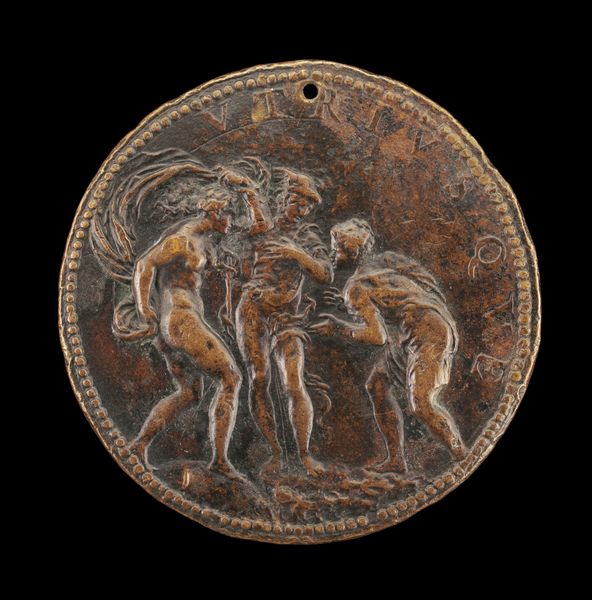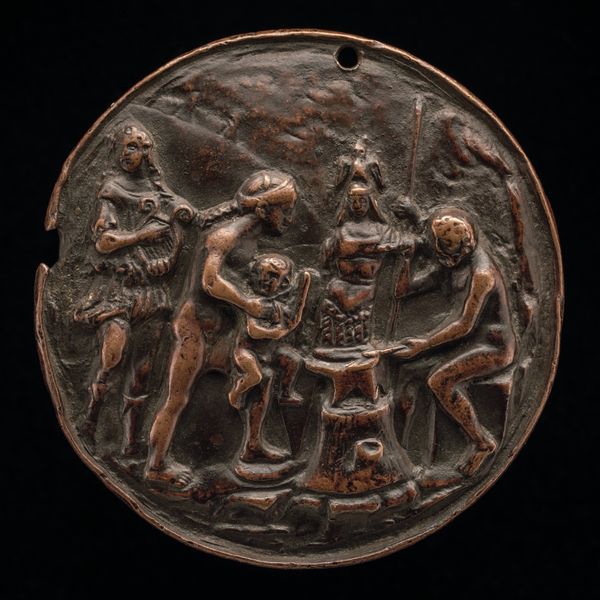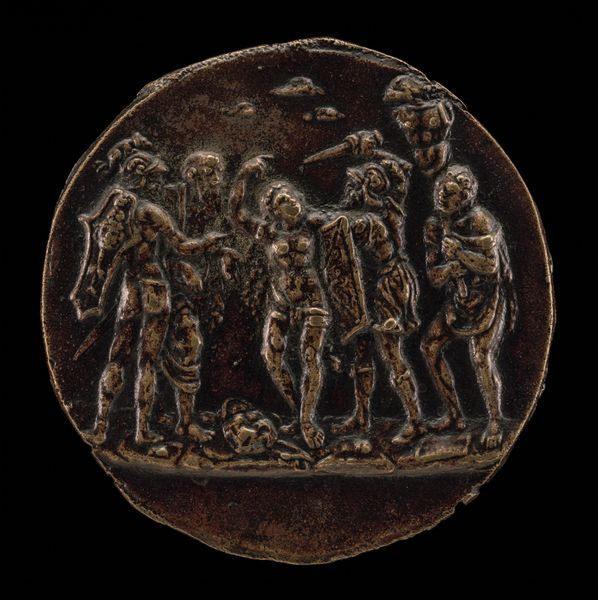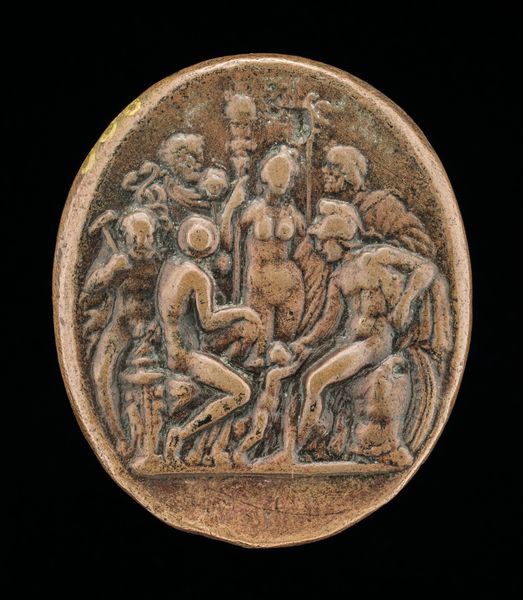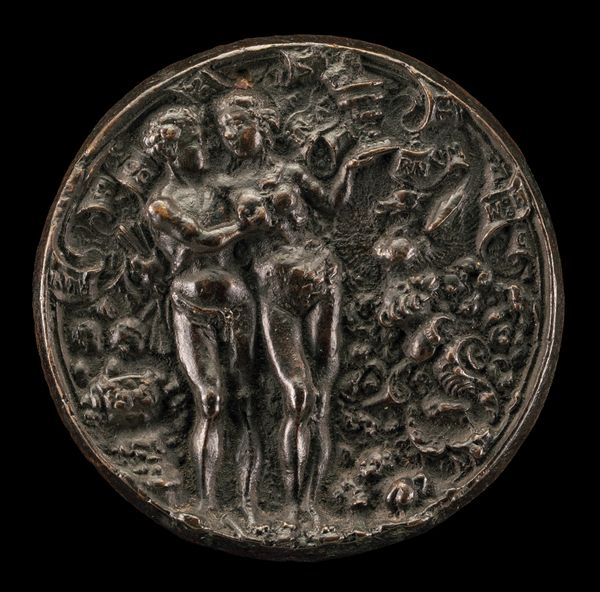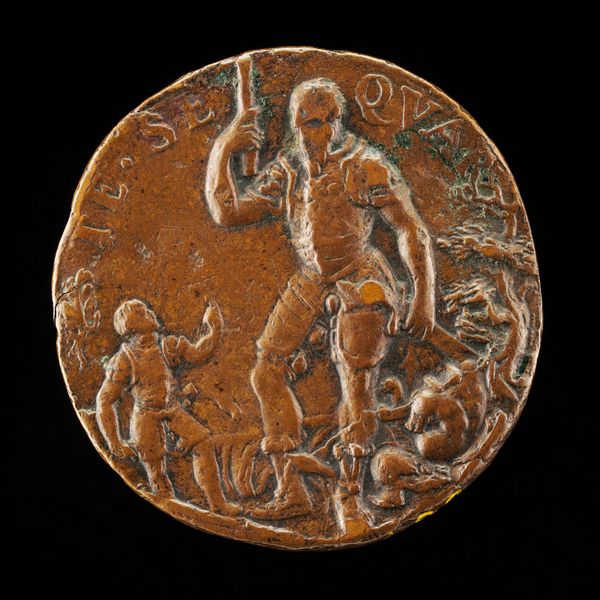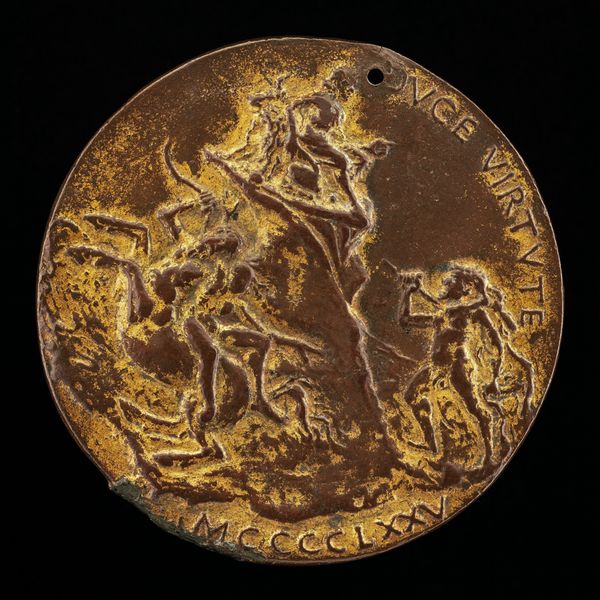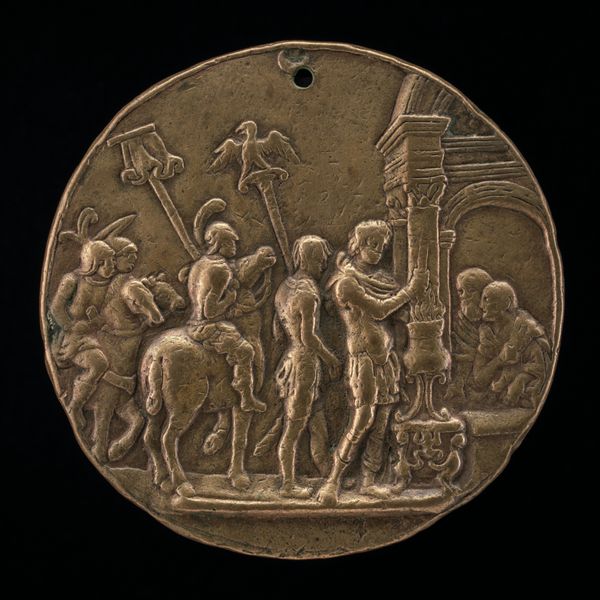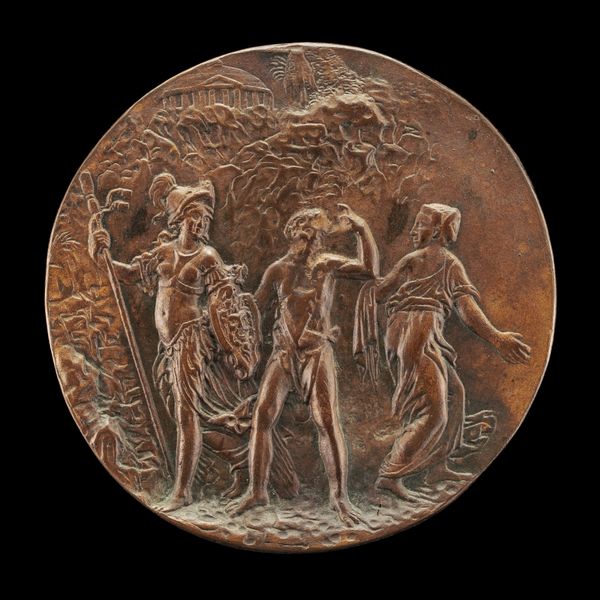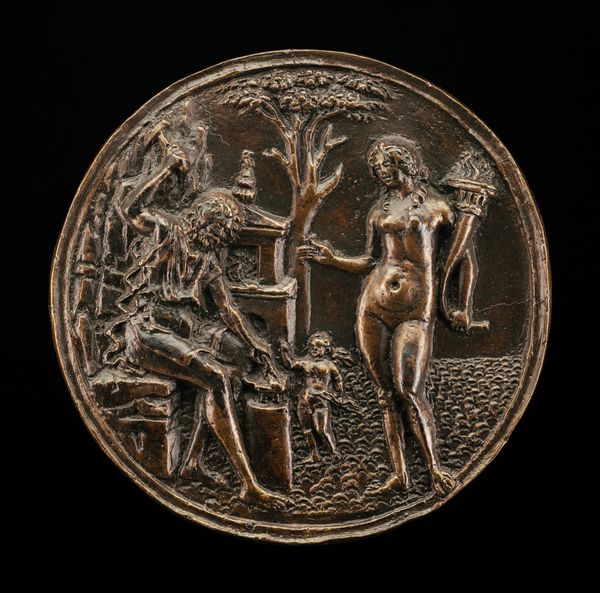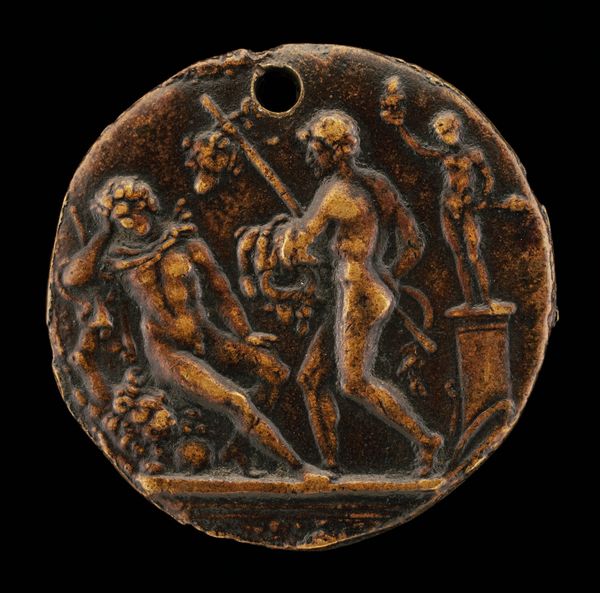
relief, bronze, sculpture
#
allegory
#
sculpture
#
relief
#
bronze
#
figuration
#
sculpture
#
history-painting
#
italian-renaissance
Dimensions: overall (diameter): 7.72 cm (3 1/16 in.) gross weight: 81.96 gr (0.181 lb.)
Copyright: National Gallery of Art: CC0 1.0
Editor: So, this bronze relief, "The Triumph of Cupid," made between 1472 and 1474 by Francesco di Giorgio Martini... it's dominated by these adorable, chubby figures. I'm immediately struck by how powerful the artist made these cherubs seem despite their small size. How do you interpret the visual language in this piece? Curator: It’s intriguing, isn't it? These seemingly innocent cherubs are actually vehicles for deeper cultural symbols. Notice how the upper Cupid aims his arrow. Consider how Cupid became this pervasive figure, not just in visual art but poetry, literature, song – even psychology. The triumph isn't just about love, but perhaps a potent, irresistible force, of desire and instinct. Editor: An irresistible force? I see them just carrying… something? It looks heavy. Curator: Exactly. They are bearing weight, physically and metaphorically. Doesn’t that emphasize how love or desire or passion, call it what you will, weighs on us? How these things come with burdens, responsibilities, maybe even pains? In what other ways did the culture reinforce the significance of these symbols in Martini's era? Editor: I guess by seeing these repeated figures everywhere. I now wonder if I have been seeing the symbolism behind them at all. Curator: And, ultimately, Martini offers a Renaissance reinterpretation. He re-purposes those cherubs not merely as carriers but perhaps reflections of ourselves in this whole cycle of life, death, rebirth and reinterpretation of symbols. What do you take away from the piece now? Editor: That imagery isn’t static. The piece made me consider cultural context in totally new ways. Thanks! Curator: It's through the persistent and inventive use of symbolic language that cultures communicate with both present and future generations.
Comments
No comments
Be the first to comment and join the conversation on the ultimate creative platform.
